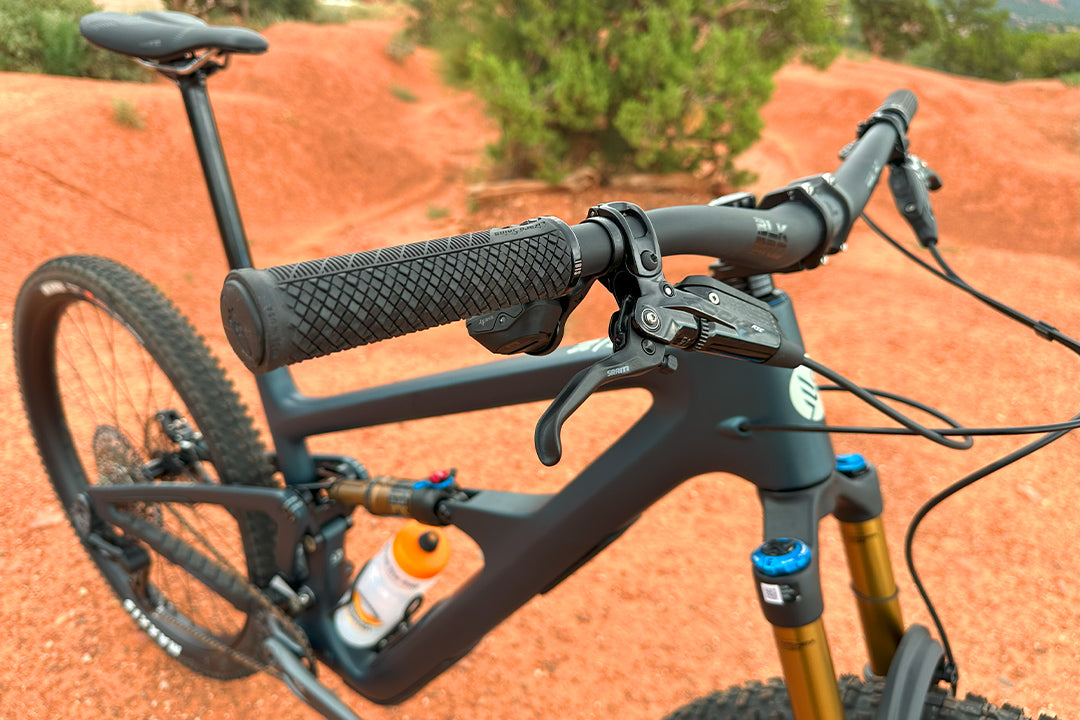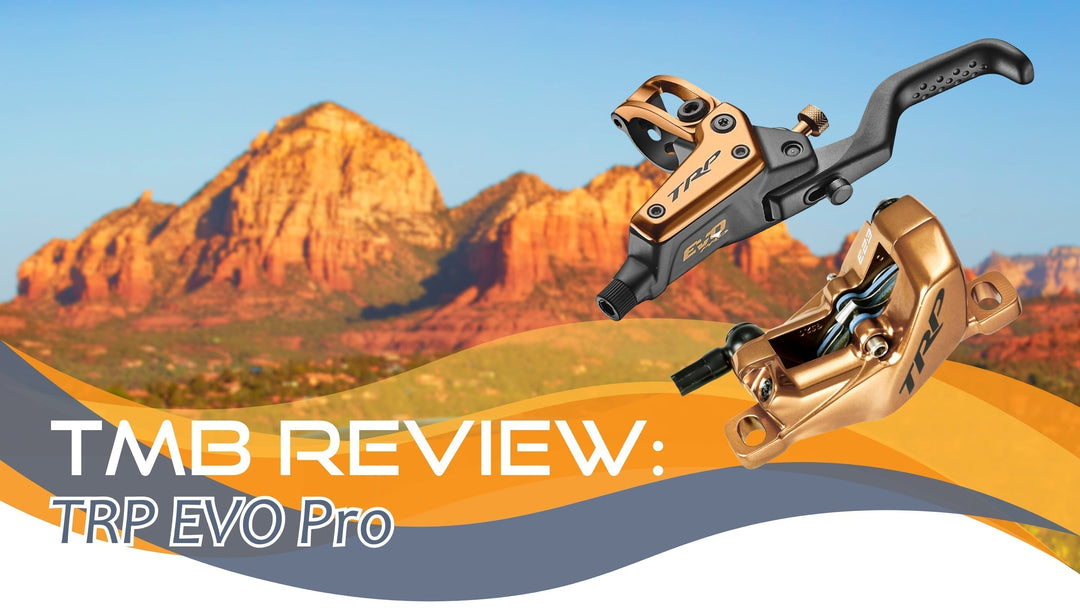FIRST LOOK: 2025 IBIS Ripley & Ripmo

When Ibis launched the HD6 in October 2023, the bike clearly marked a new direction for the company. Out was the brand’s signature rounded tube profiles and swoopy lines; in came a straighter, cleaner aesthetic. Though the HD6 still rode on the venerable DWLink suspension, Ibis seemed to have squeezed even more magic from the setup with new kinematics that made it feel both ridiculously nimble for climbing and simultaneously more progressive and capable on descents.
We have been absolutely blown away by the HD6, though at the end of the day it is still a muscly, specialized tool for enduro. But now, with the Ripmo V3 and Ripley V5, Ibis brings the same modern voodoo to its everyday drivers.
THE DETAILS

“The HD6 was a great time to create a new visual platform for Ibis. For the new Ripmo and Ripley, we loved the balanced platform and pushed the angularity even more.”
Though Ibis has made incremental changes to both the Ripley and Ripmo in the last two years, adding UDH derailleurs, enhanced chain protection, and upgraded bushings to the rear triangles, the bikes remained effectively the same in terms of geometry and handling. Now, it’s clear why: Ibis has been revamping both of these top sellers simultaneously to match modern trends and a new brand identity. That’s why many of the changes are reflected on both bikes.

Like the HD6, the most noticeable update to both bikes is the more angular tube shapes and straight-line aesthetics. Longtime Ibis devotees may lament the loss of the swoops, but the truth is that shaping was always divisive (some loved it; some not so much) and the new forms look much more up to date.
“There was a moment where to showcase carbon meant that larger radius and swooping curves gave the customer a quick impression of the material: swoop equaled carbon; straight equaled metal. Now that carbon is ubiquitous [in] full suspension mountain bikes, we can be as subtle or direct as we want to be,” says Roxy Lo, designer and partner at Ibis. “The HD6 was a great time to create a new visual platform for Ibis. For the new Ripmo and Ripley, we loved the balanced platform and pushed the angularity even more.”
Beyond aesthetics, the new designs have simplified manufacturing and made it possible to add both additional sizes (five per model compared to four previously) and size-specific detailing and kinematics.

That means adjusted chain stays, head tubes, geometry, and shock rates per size so that each model has exactly the same feel, whether you’re a small or an extra-large.
“Creating a more angular center section made structural sense and gave us an opportunity to increase ease of manufacturing,” explains Lo.
Keeping with industry trends, the other overarching shift for both bikes is longer, slacker, and more capable. The Ripley gets a bump up in travel (both front and rear), and both bikes have more raked-out front ends for handling confidence and steeper seat tubes for better pedaling efficiency. One trend we’re happy to see Ibis buck is the move toward ever-lower centers of gravity: both models are incrementally taller at the bottom bracket, which should help to alleviate pedal strike.

Other across-the-board changes include flip chips to accommodate mullet wheel setups if desired, a slick in-frame storage solution collab with Cotopaxi, and the mod new Ibis head badge.
When asked what changes he’s most excited about with the new bikes, Ibis founder and principal Scot Nicol hesitates. “It’s a tough question because there are so many refinements,” he says. “I'm really happy to announce we've added that extra size. It will answer the sizing conundrum for those who sit in the middle of the bell curve.” After some reflection, he adds, “But I’d probably have to say the new design language. The bike is just plain stunning to look at.”
Ripley V5

Ibis’ nimble, short-travel trail bike gets the more dramatic changes of the two, stepping up to 130mm of rear travel and a 140mm fork. The front end is also far slacker at 64.9 degrees (previously 66.5), and the reach is a little longer. These changes put the new geometry almost on a par with the previous edition of the Ripmo (albeit with 10mm less travel) and either in line with (Trek Fuel EX) or more aggressive than (Transition Spur) the mid-size trail bike competition. The result should be a bike that’s more capable on steep terrain and stable at speed. Assuming the kinematics of the DWLink follow suit with the HD6 improvements, the Ripley threatens to be the quiver killer.
These changes make good sense given that Ibis’ highly efficient and playful short-travel ride, the Exie, had started to bear down on Ripley terrain. The new Ripley promises to be a much harder-charging and burlier ride. Though it remains to be seen how light you can build it given the two-pound weight gain from the previous frame and fork. It will also be interesting to see if and when Ibis brings the new design aesthetic and changes to the Exie.
Ripmo V3

Compared to the large-scale Ripley adjustments, the geometry changes to the Ripmo are more incremental. And that’s alright by us since the V2S is already one of the best-handling bikes on Sedona trails.
Rear travel bumps up ever so slightly to 150mm (previously 147mm), and the stock build comes with a 160mm fork. The front end is half a degree slacker (64.5) and the seat angle half a degree steeper (76.5-77.5 depending on size), the combination of which should make this both more composed and playful on rowdy terrain. To keep the ride quality consistent and accommodate these numbers, the smallest two sizes get mullet builds (29-inch front wheel; 27.5 rear), while the larger three sizes are 29ers. All frames are now coil-shock compatible, as well.
Like the Ripley, frame and fork weight here has also increased dramatically, to 7.6 pounds, though that’s no doubt partly accommodating the in-frame storage design.
THE RIDE
Thunder Mountain received a new Ripley and Ripmo the day the bikes were released, and we’ve taken a week to put them through the Sedona paces.
And what a week it’s been.
Check out our first ride here:
“First rides usually require a ton of adjustments, but not this one. I jumped on, jumped into Hiline, one of the hardest trails here, and I loved it. The only thing I’d change is the grips.”
Given that the Ripmo was already one of our top favorite bikes for riding our local trails, expectations of the new models were stratospheric. And the bikes didn’t disappoint.
From the outset, the new Ripmo made the biggest impression. That’s a little surprising given the incremental changes the model saw relative to the Ripley; on the other hand, this was already our favorite Sedona bike, so some key changes just made it moreso. Other than the aesthetics, which everyone at the shop loved, the most notable improvement was the revised DWLink and kinematics, which somehow got even more efficient.
“In a blind test climbing, no one would ever guess this bike has 150mm of travel. It’s bananas how light and nimble it feels,” says TMB owner, Mike Raney. “And after climbing up, the bike really opens up what is possible on the descents.”
What Ibis has squeezed out of this suspension—across the platform, from Ripley to HD6—does feel like sorcery, transforming long-travel bikes to climb like short ones and trail bikes to descend like enduro machines.
The other big feedback was more mundane, but no less important. We rode the GX Transmission build, and the bike felt perfectly dialed out of the gate. Fox Float 36, Fox Float X piggyback shock, in-house Blackbird alloy wheels, four-piston SRAM Code brakes, Bike Yoke dropper.
“First rides usually require a ton of adjustments, but not this one,” says Raney. “I jumped on, jumped into Hiline, one of the hardest trails here, and I loved it. The only thing I’d change is the grips.”

Look: Reviews of the Ripley were just as glowing. The new Ripley gets the same efficiency in climbing and is hands and fists more planted, capable, and playful than the previous iteration courtesy of the 130/140mm configuration. It’s probably gotten too hefty for a trail-bike racer but will make the ultimate all-day ride. It just depends on where you are riding.
“If you live somewhere you have to pedal to technical trails, you’re going to love the Ripmo,” says Raney. “If your home trails are less technical and you come from a down-country background, the Ripley is going to open your eyes and push you further.”
The fact is, these two bikes are the same frame with different linkages and suspension, meaning the weights aren’t that different. Our Ripley came in at 31 pounds; the Ripmo topped out at 33 (same GX Transmission build with alloy wheels). For a place like Sedona, with big steps, jumps to flat, and lots of tech, we’d overlook the minimal weight penalty for the added capability of geometry and travel. If we lived somewhere less technically demanding, say Santa Fe or Aspen, we’d take the weight savings and still be shredding well beyond the numbers on the Ripley.
And yeah, this launch opens the door for a longer, more capable, and truly light Exie down the road.
One final note from our rides so far: the extra frame size (sitting between Medium and Large, and dubbed Extra Medium) is indeed a boon and should help accommodate more riders more comfortably. But check those numbers carefully. We ordered size Large, the standard for much of our team, but several feel they’ll be more comfortable on the Extra Medium.
LAST WORD

The Ripmo has long been one of the bikes we most highly recommend for Sedona trails. The new updates reinforce that feeling. The stiffer, slacker, sharper build seems like it’s tailor-made for riding here. At the same time, by significantly bolstering and improving the Ripley, Ibis has built a seemingly evenly matched tool for those who prefer a lighter, shorter travel bike. Several staff are already talking about upgrading—some to the Ripley, others to the Ripmo.
It’s a debate even among Ibis employees.
“‘Quiver killer’ was batted around our offices for both Ripley and Ripmo,” says Nicol. “Ibis staffers are fairly equally divided on the question. It comes down to where and how you ride.”
Preferences aside, it’s pretty awesome to be spoiled for choice. Give us a call or stop by to test ride either of the two new models and find out which one might be right for you.





